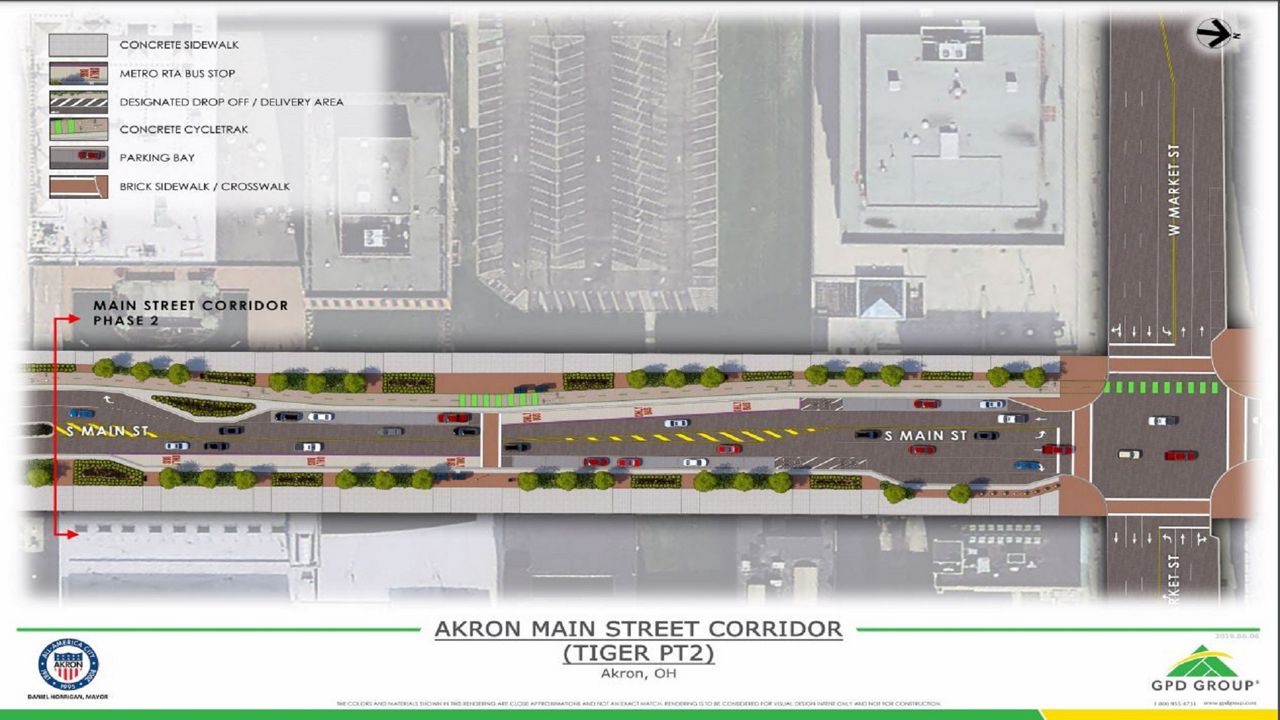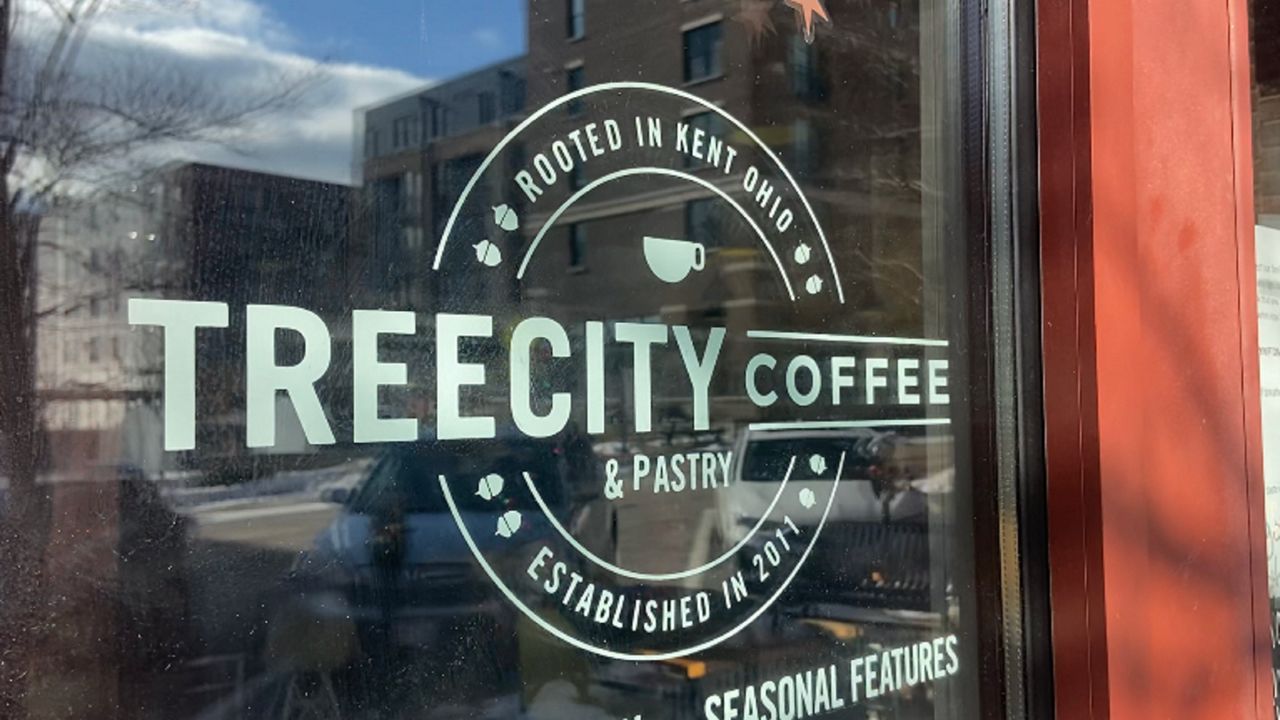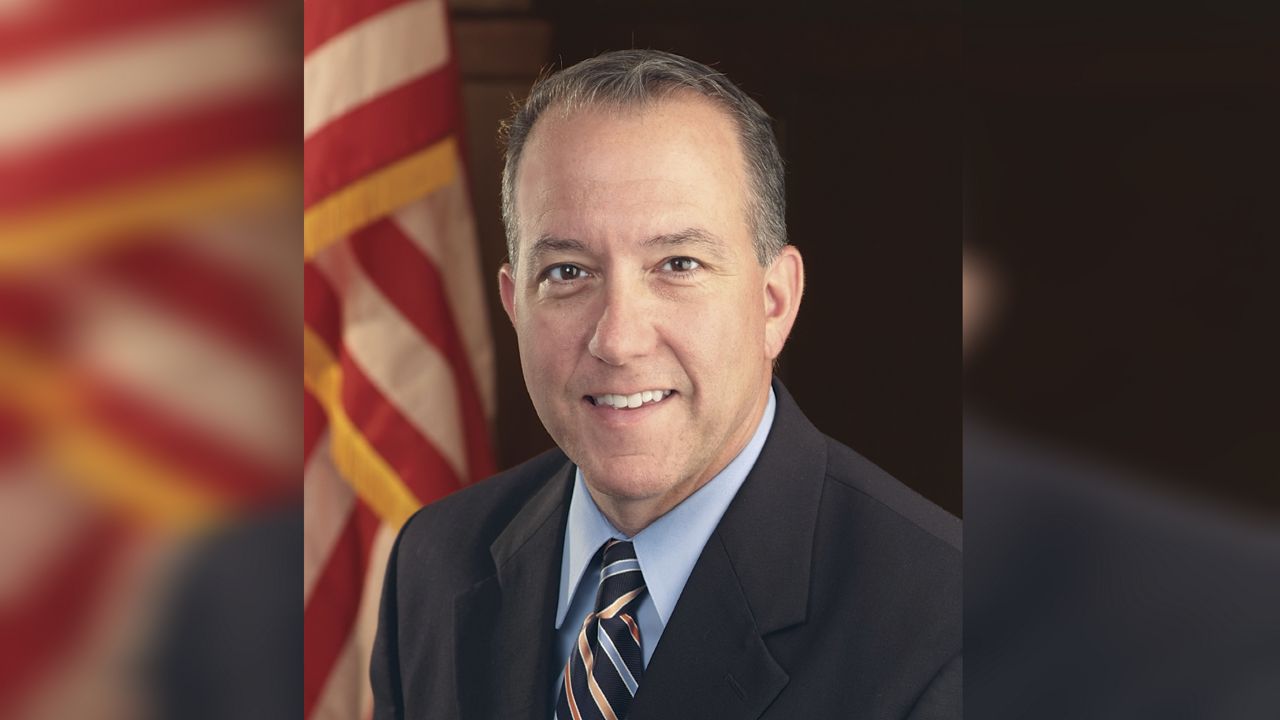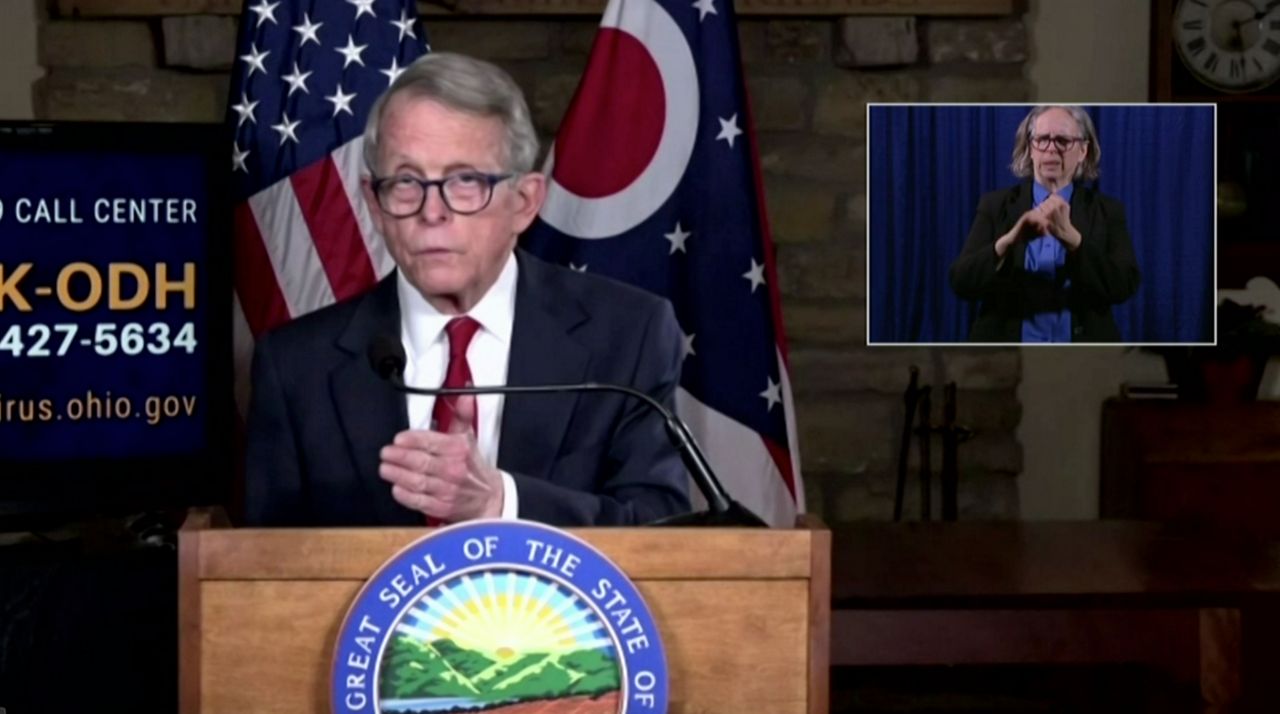AKRON, Ohio — Akronites who have likened the city’s downtown to a war zone in recent years will likely be relieved to learn the end of construction is finally in sight.
What You Need To Know
- Akron's Main Street Corridor Project is transforming 1.4 miles of Main Street through the heart of downtown, reconstructing and improving streets, sidewalks and all utilities, while adding a green corridor and infrastructure
- On Monday, Phase 2 will close the final segment of Main Street in both directions from Market Street to Mill Street through until May 31, 2021
- Mayor Dan Horrigan asks residents to patronize downtown Akron businesses, which have struggled, first with closures from the construction, and now the pandemic
Phase 2 of Akron’s roughly $45 million Main Street Corridor project is heading into the final, if disruptive, stretch, city officials announced on Wednesday.
On Monday, excavation and utility work of Main Street will begin, closing the final segment of Main in both directions from Market Street to Mill Street until May 31, 2021.
The work is part of the second stage of Phase 2, which is estimated to cost $14 million and take much less time than Phase 1. Phase 2 quietly launched last October with excavation and utility work on the sidewalks along that segment of Main.
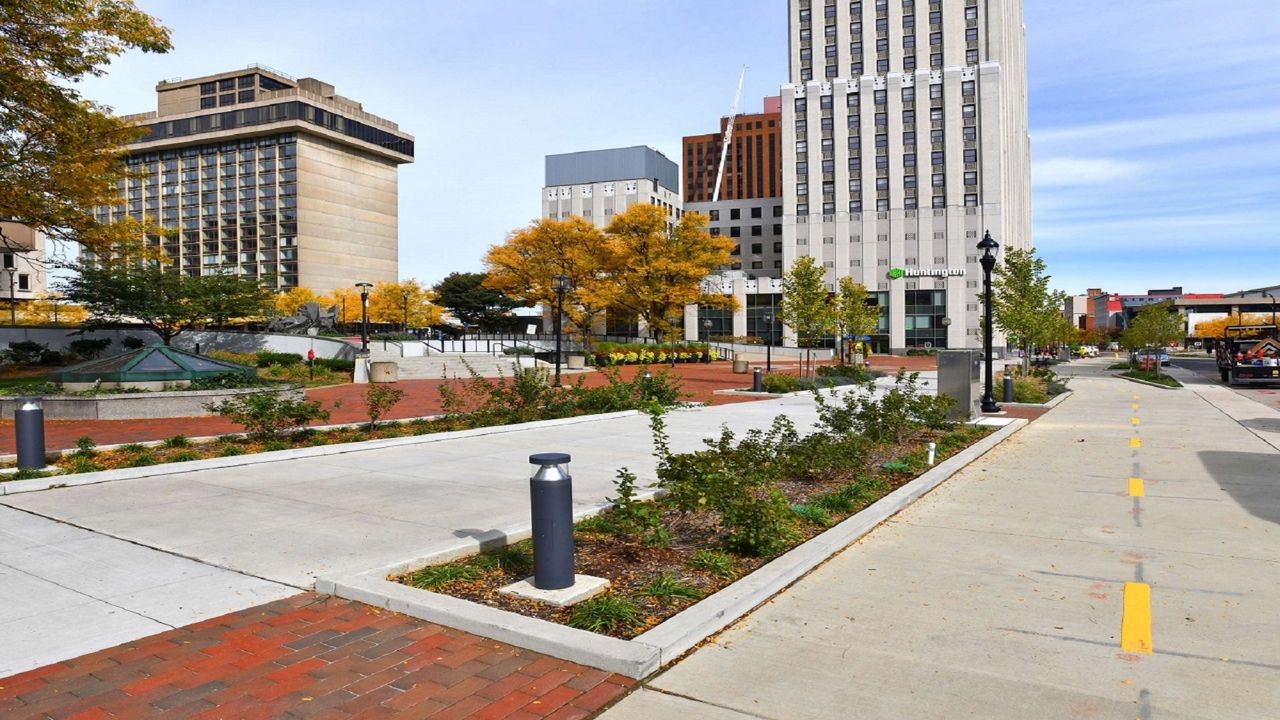
Phase 1, from July 2018 to last October, accounted for more than $30 million of the overall project price, and stretched from Cedar Street to Mill Street.
“The transformational upgrades we are making now in our downtown corridor will benefit Akronites for generations to come,” said Mayor Dan Horrigan in a news release. “And once it is finished, the improvements will create a unified, accessible, and beautiful corridor all the way from Cedar Street to Martin Luther King Blvd. (State Route 59).”
The Main Street Corridor project comprises complete reconstruction of 1.4 miles through the heart of downtown Akron. The work extends from building front to building front, and includes improvements to all sidewalks, roads and underground utility work.
The project features a green corridor along Main Street and green infrastructure. Street and sidewalk improvements feature mid-block pedestrian crossings, new on-street parking, dedicated parking/buses/delivery vehicle lanes, a cycle track, smart LED lighting and new signage. Storm water management improvements, and transit and traffic-flow enhancements also have been made, the city said.
In Phase 1, a roundabout was built at Main and Mill streets that is planned to feature a 12-foot bronze rubber worker statue created by Ohio Sculptor Alan Cottrill. The artwork is expected to be installed in spring 2021, said city spokeswoman Ellen Lander-Nischt.
Since the project began, orange barrels and construction equipment have lined downtown streets, which have been on a shifting schedule of closures. Many businesses have struggled, with some closing permanently, after first facing a diminishing clientele followed by the pandemic.
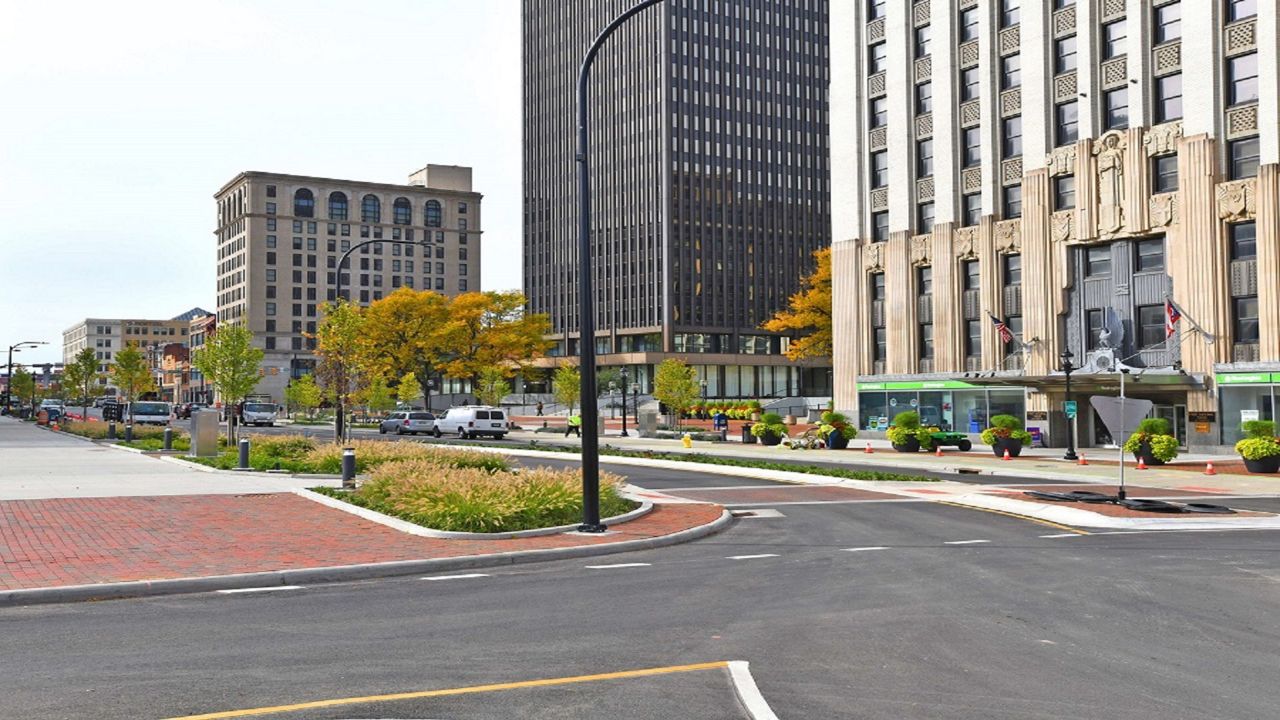
The city and Downton Akron Partnership (DAP), an organization that promotes downtown, have worked to help businesses offering grants, free downtown parking and other programs that can draw customers to downtown. Special events, signage and other initiatives have been launched to help customers navigate the construction once they arrive. Updates on downtown dining and shopping are kept updated on DAP’s website.
“I urge all our residents to continue to support downtown restaurants, retailers and organizations as they work to remain open through this challenging pandemic,” Horrigan said.
Now, Phase 2 will close a section of Main Street once again, with traffic coming from the south detoured at Mill Street and directed east to Broadway, north to Market Street, and then back north on Main Street.
Traffic from the north on Main Street will be detoured at Market Street and directed east to High Street, south to Mill Street to the roundabout and then back south on Main Street. Sidewalks will be open on both sides of the street throughout, the city said.
Improvements featured in Phase 2 include parallel parking lanes on both sides of the street, a continuation of the cycle track connecting to the nearby Towpath Trail, and room for sidewalk cafes.
Partial funding for the project came from two federal Transportation Investment Generating Economic Recovery (TIGER) grants: $5 million in 2016 and $8 million in 2018. An additional $7.5 million in Federal Bridge funds was awarded in 2017 to enable the city to replace the State Street Bridge, which runs between Water Street and Main Street.




